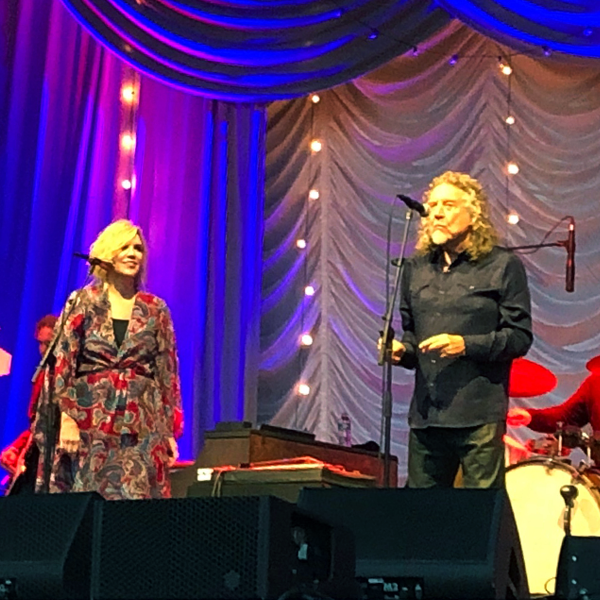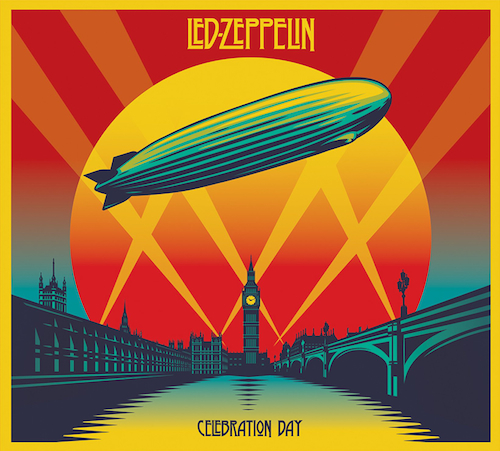Led Zeppelin’s cottage revival and the birth of III
By NICK TAVARES
STATIC and FEEDBACK Editor

“Credit must be given to Bron-Y-Aur, a small derelict cottage in South Snowdonia for painting a somewhat forgotten picture of true completeness which acted as an incentive to some of these musical statements.”
Among all the stories and legends surrounding Led Zeppelin, on and off the stage, musical and otherwise, this might be my favorite. Sitting around a cabin with a fire and some guitars is just about the perfect vacation. Knowing that this setting — free of electricity and running water — was where Jimmy Page and Robert Plant crafted much of what would become their third album, notebooks filling and tape recorders running indoors and out, adds a grounding reality to the mythic monsters that Led Zeppelin would become.
And knowing that, just a short time later, they’d be blasting through arenas howling “Immigrant Song” to the masses, adds an excellent level of insanity to the entire affair.
As the new year and new decade have begun their slow, unstoppable marches, I’ve been firmly rooted 40 to 50 years in the past, running up and down through the entire Zeppelin catalog and reading a couple of books to accompany said listening. With that comes imagining standing in the middle of the floor at Madison Square Garden in 1973, or Earls Court in 1975, Knebworth in ’79, the Forum in ’77, or perhaps tending to a pot in the kitchen while Page and Plant worked out the early kinks on “That’s the Way.” The band ascended up to rock royalty quickly, and finding the markers in their catalog that reveal the source of that climb adds to the experience.
Enter their third album. Being able to pair those pastoral compositions with a thundering approach was a feat that few were prepared to attempt and fewer still managed successfully. And, arguably, no one managed it with nearly the power and fluidity that Led Zeppelin did in their prime. On Led Zeppelin III, we got a true glimpse into just how far that power could reach.
![]()
A few years ago on Marc Maron’s WTF podcast, Ty Segall noted that for some bands, the question of their “best” album has a “right answer.” Black Sabbath’s was Vol. 4, Pink Floyd’s was Animals and Led Zeppelin’s was III. I don’t know if his picks would be my picks across the board (I might go with Master of Reality and Meddle for the first two, respectively), but sometimes, Led Zeppelin III does feel like the right answer. It’s not the towering triumph of Physical Graffiti or the relentless, pound-for-pound brilliance of the untitled fourth album. But it demonstrates how far they’d progressed in just a little more than a year since the release of their self-titled debut. And the growth stands out on each end of its spectrum.
To demonstrate that, we’re greeted off the bat with a count in and the slam directly into “Immigrant Song,” the tune that literally gave us the “hammer of the gods” and would serve as a stunning opener for the next couple of years in concert. The band had a thundering magic immediately upon forming, and that grew from the first album to Led Zeppelin II, where the riffs got a little nastier and the band got much more confident after a year of constant touring. But the “Immigrant Song” riff is a monster, with Page, John Paul Jones and John Bonham locking in to the song’s stuttering groove. Listening to it — especially the live versions — is not a subtle experience. It’s all their swagger and brute force shoved into two minutes and 25 seconds.
Which makes their next move so jarring. From this thundering opus, the band glides into the open-chord exercise of “Friends,” with is celtic guitar phrasing and Robert Plant’s voice, while still soaring, is adjusted appropriately for the acoustic atmosphere. It’s rooted in folk and augmented with Indian string overtones, but it’s not simply some crass nod to Crosby, Stills & Nash or Joni Mitchell. It’s their own take on the genre, and an expansion on their previous acoustic interludes from the past.
Everything the band did was so intentional, right down to deciding which of their spur-of-the-moment bursts of improvisational creativity would be preserved and reproduced on vinyl. This move was clearly a statement, intending to correct the record and purposely build in some separation between themselves and the rest of the heavy rock world. They carry this on through most of the second side, reviving English folk tunes (“Gallows Pole), working in contemporary folk traditions (“Tangerine”), spinning rollicking odes to their pets (“Bron-Y-Aur Stomp”) and taking that sound achieved in the Welsh cabin to its greatest peak (“That’s the Way”).
Of all the moments that likely stunned those on their first listens in 1970, “That’s the Way” seems the farthest destination possible from “Whole Lotta Love” or even the opening “Immigrant Song.” It lilts through it’s open G strums while Plant sings with such innocence and just the right amount of nostalgia. The linear path of the song’s story isn’t the easiest to trace, but it’s the feeling it levees that matters.
Still, all the fretting that the band had abandoned it’s thundering approach should have been quelled on the first side. “Friends” drones right into the rollicking “Celebration Day,” and that in turn is followed by one of the more powerful moments of the band’s career in “Since I’ve Been Loving You.” Taking the blues of the first two albums to a stunning new capstone, the band blended everything they’d done to that point, and synthesized their new album in one song. From its sturdy, arpeggio introduction through Plant’s wailing vocal, Bonham’s thundering drums and Jones’ haunting Hammond organ, the song is a showstopper. It could be argued that this is the best Page’s guitar would ever sound on a Zeppelin recording, and the same could be said for Plant’s voice, no longer just howling but calling out in an emotional plea.
Gazing beyond the rest of a fascinating record, how anyone could listen to this song and think that the band had lost its touch is beyond me.
![]()
Sorting through their entire catalog, this feels like the record where they purposely went for the weirdest alleys. Later, they would explore more epic arrangements and they would hit heavier grooves and they would continue to keep a foot in the acoustic light to contrast their bombastic shade. But they were so doggedly determined in expanding their terrain on III. Not content with no. 1 albums and commercial success, they looked to expand their footprint to continue marking their musical territory.
And it started in a cottage, as far removed from the Forums of the world as possible. They grounded themselves, explored the space of new sounds and emerged out the other side with the ability to seemingly do anything they wanted.
It may not have been enthusiastically received at the time, but this album set up the rest of their career and kept them from just being another great, heavy, rock and roll band. Not that that would’ve been such a terrible fate, of course. But, credit to Bron-Yr-Aur, becoming Led Zeppelin in all their overwhelming glory was clearly the correct move.
Jan. 13, 2020
Email Nick Tavares at nick@staticandfeedback.com














